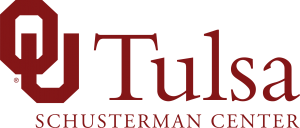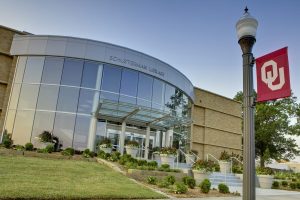OU-Tulsa Powers Innovation through Connectivity
As classrooms become increasingly connected, adequate bandwidth is vital to the growth and development of universities and colleges across the state. A recent network upgrade at the University of Oklahoma-Tulsa (OU-Tulsa) is helping better connect students, faculty and staff by improving bandwidth services across the OU-Tulsa campus. The upgrade increases bandwidth speed tenfold, allowing the university to focus on its mission-critical functions with fully functioning IT services.

OneNet helped the university alleviate disaster recovery issues and improve business continuity by upgrading the network from a 1 Gbps to a 10 Gbps bandwidth. As a result, the high-speed circuit allows the university to further scale IT solutions equally across OU’s three campuses.
OU-Tulsa needed greater bandwidth to ensure business continuity for the university’s academics, research and clinical missions. The university also needed greater capacity for disaster recovery, resulting in improved critical data backup solutions during allocated outage windows. To meet their bandwidth needs, the university partnered with OneNet to find a scalable and cost-effective solution for its network upgrade.
After switching to the 10 Gbps, OU-Tulsa immediately noticed increased network connectivity performance for several customers and increased response times for data backup. The upgrade also meant that the OU IT team was able to add network storage into the Tulsa shared services data center, which increased redundancy by eliminating single points of failure.

OneNet’s high-speed circuit enables the OU-Tulsa IT department to equally participate in IT service delivery, allowing for seamless integration across all three OU campuses. The integration expands IT services at the Tulsa campus, while improving disaster recovery options for the Oklahoma City and Norman campuses.
“High-speed connectivity is what powers the research and innovation that takes place at higher education institutions like OU-Tulsa,” said OneNet’s Executive Director, Vonley Royal. “The network upgrade will not only improve daily IT operations, but will also enable the university to expand on new and current projects.”
The OU College of Engineering at OU-Tulsa is one department that will benefit from the upgrade as they work to improve travel time records for the Oklahoma Department of Transportation (ODOT) using high-speed connectivity. The OU College of Engineering at OU-Tulsa currently hosts and processes ODOT travel time records for the state national highway system (NHS), which are reported every five minutes for thousands of highway segments.
The network upgrade improves recording time for the OU College of Engineering, enabling OU-Tulsa to host and process Oklahoma City and Tulsa roadways in real-time. This high-speed circuit will support OU-Tulsa’s efforts to become the ODOT choice for processing national performance measurements required by Federal Highway Administration (FHWA).

In addition to powering engineering projects, the 10 Gbps high-speed circuit allows higher education institutions, such as OU-Tulsa, to have the capability to store data in multiple data centers. The high-speed circuit also ensures that daily operations are not impacted by the high bandwidth needs of data replication and back up.
By working with OneNet, OU-Tulsa’s high-speed connection is also connected to Internet2’s 100 Gbps nationwide network. Internet2 is a member-owned, advanced technology community that operates the nation’s largest and fastest, coast-to-coast research and education network. The connection to Internet2 enables OU-Tulsa to collaborate with higher education institutions and other organizations across the country for advanced educational, health care and research initiatives.
“Working with OneNet helped our department ensure that OU-Tulsa’s mission-critical functions of teaching, research, service and clinical care can be carried out each day with fully functioning IT services,” said OU-Tulsa’s Director of Information Technology, Dana Saliba.
With technology at the center of higher education, OneNet’s high-speed network ensures universities and colleges like OU-Tulsa have access to the connectivity they need to power their mission in the digital age. OU-Tulsa serves as an example of a higher education institution committed to advancing digital learning opportunities through connectivity.
Story by Meagan Leber, Strategic Planning and Communications Intern Spring 2019.
Photos courtesy of the University of Oklahoma-Tulsa
